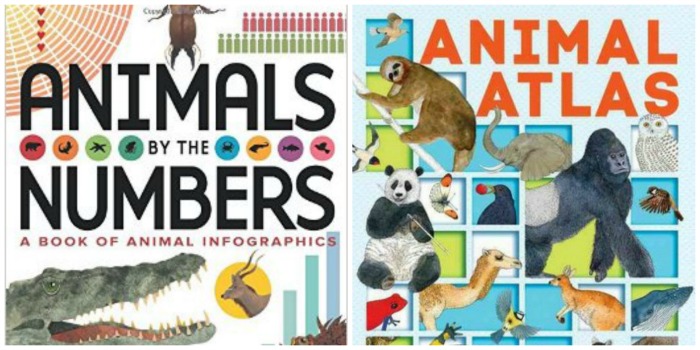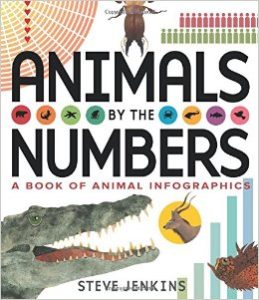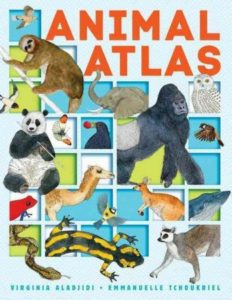Between zoos and aquariums and their favourite movies, the girls are fascinated by animal facts. I’m often surprised by what they remember. This week in science, we had lots of fun learning more about animals around the world with Animals by the Number and Animal Atlas.

Animals by the Number: A Book of Animal Infographics
Animals by the Number: A Book of Animal Infographics is a fun book full of animal facts. Using numbers and graphs, Steve Jenkins presents tons of fascinating data about birds, fish, insects and mammals. (I love the way this book combines science and math concepts!)
Numbers help us understand our world. We use numbers to measure and compare things. When it comes to animals, numbers are especially important. How big is a whale? How fast is a cheetah? How loud is a lion’s roar? It would be difficult to answer these questions—even to ask them—without numbers.
 We learned about the fastest mammals, birds and fish; how long various animals sleep during a 24-hour day; which animal has the longest tongue; and what sorts of decisions an armadillo has to make when it sees another animal approaching.
We learned about the fastest mammals, birds and fish; how long various animals sleep during a 24-hour day; which animal has the longest tongue; and what sorts of decisions an armadillo has to make when it sees another animal approaching.
Several pages talked about deadly and dangerous animals. I knew the sharks, while greatly feared, aren’t really that dangerous. I was a bit surprised by some of the animals that have killed more humans than a shark—from an elephant to a Cape buffalo and finally the most dangerous animal, a crocodile. (Sharks cause 10 deaths per year, while a crocodile causes 1,500 deaths per year!)
Animals by the Number is full of graphs, pictures, diagrams and more. It makes these animal facts accessible and easy-to-see. The girls loved the bright pictures. Most pages had more pictures than text, making it easy for children to read. I read some pages to the girls and assigned other pages for them to read.
Animal Atlas
 While Animals by the Number organizes animals numerically, Animal Atlas organized them geographically. They provide a great companion to each other. Both books organize animals by type; Animal Atlas shows the land animals, flying animals and aquatic animals of each continent.
While Animals by the Number organizes animals numerically, Animal Atlas organized them geographically. They provide a great companion to each other. Both books organize animals by type; Animal Atlas shows the land animals, flying animals and aquatic animals of each continent.
In each section, Animal Atlas provides a map of the continent with pictures of the animals who live on that continent. Dots on the map match each animal, indicating where they live. The next page provides a paragraph about each animal with their class and their Latin name.
Although the number of identified species existing on Earth is unknown, this animal atlas introduces nearly 250, including mammals, birds, insects, mollusks, squamates (reptiles), and crocodilians (previously known as reptiles), fish, and more. In this atlas, the world has been divided into nine zones.
Animal Atlas is a great reference book for any student. We’ve had fun looking at a map a day and reading about the corresponding animals. It’s fun to learn about new animals in other parts of the world. It’s also fun to learn more about animals we recognize around us.
If your children love animal facts, they’d love both of these books.
I received these books for review courtesy of Raincoast Books; all opinions expressed are my own.

One Response
Being a grandparent means I am interested in books for children. This is a good review — thanks.